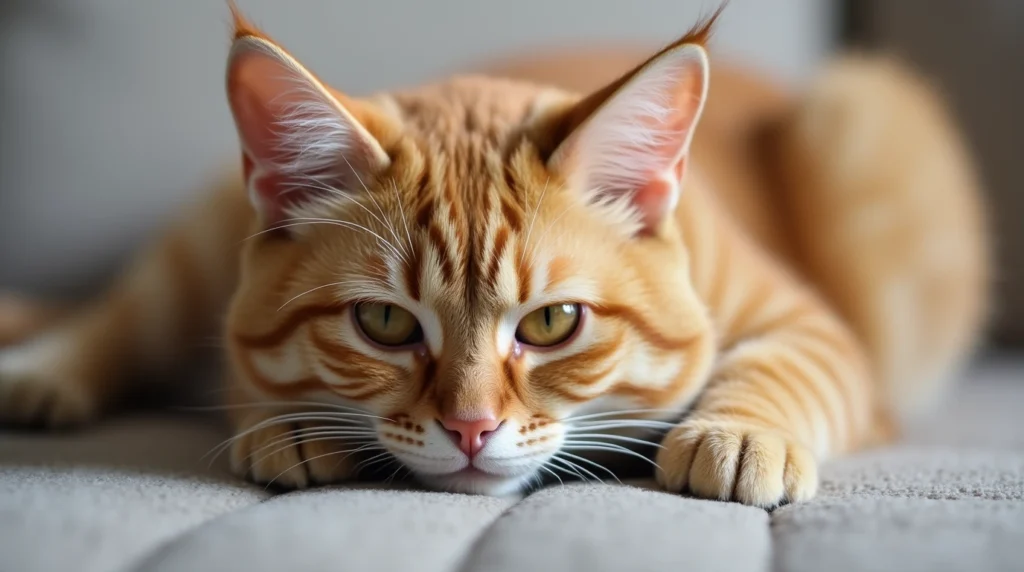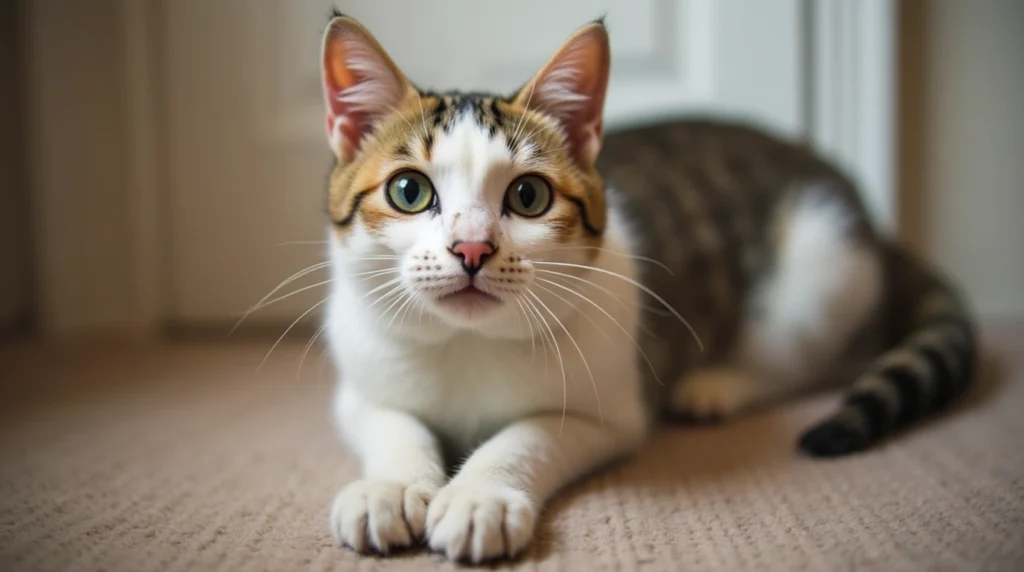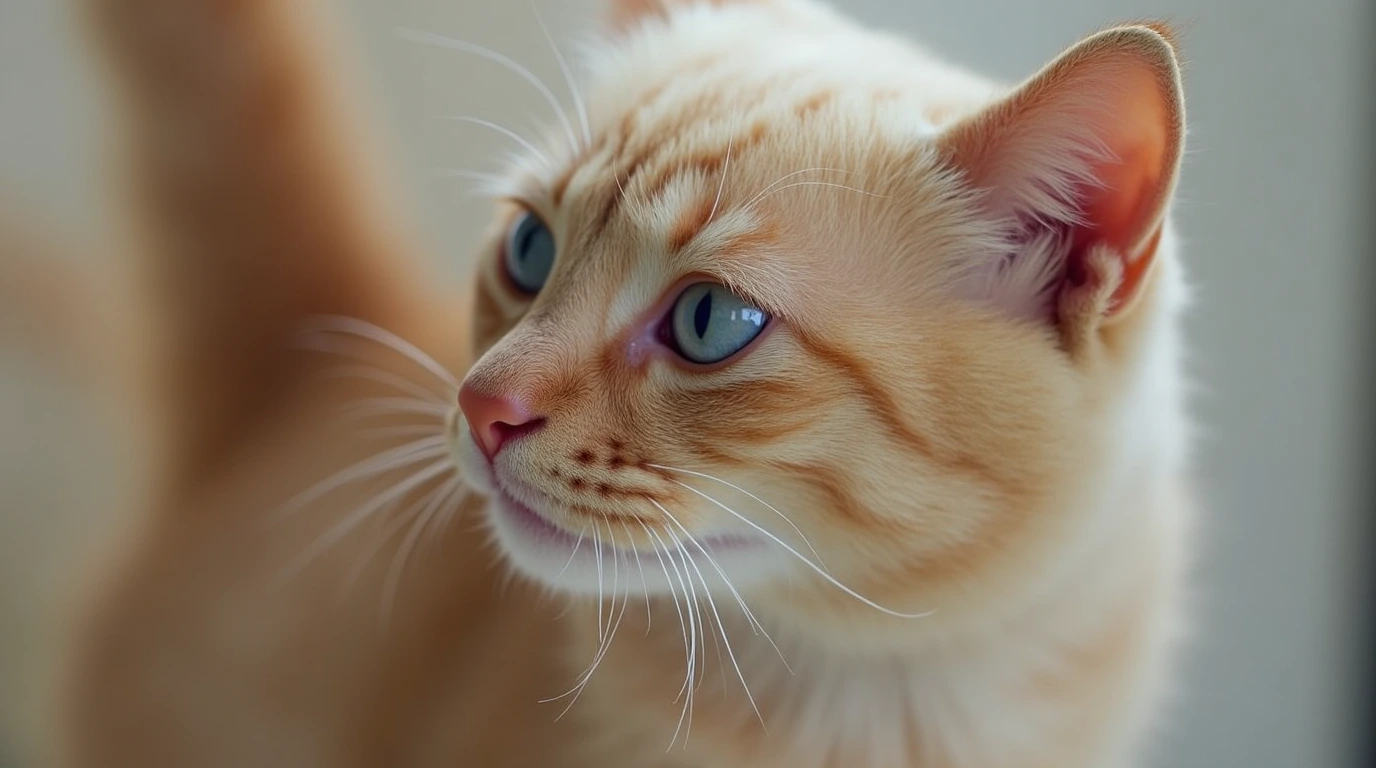If your female cat is yowling at all hours, acting overly affectionate, or constantly trying to escape, you’re not alone. For pet owners, understanding unspayed female cat behavior can feel like solving a mystery—one that’s often noisy and stressful. These behaviors stem from natural instincts, specifically your cat’s estrous cycle, commonly known as being “in heat.”
But while your cat’s behavior may seem frustrating, it’s essential to understand what’s happening and why. This guide will provide you with everything you need to know about unspayed female cat behavior—from the signs and biological causes to solutions that work. By the end, you’ll know exactly how to manage this behavior and make life easier for both you and your feline friend.
Table of Contents

What Is Unspayed Female Cat Behavior?
Before diving into the specific behaviors, let’s clarify what it means when a cat is “unspayed.”
- Unspayed: A female cat that hasn’t undergone spaying surgery to remove her reproductive organs.
- Spaying: A procedure that prevents a female cat from experiencing heat cycles, mating, and becoming pregnant.
Unspayed female cat behavior is largely influenced by biology. When cats are unspayed, they go through cycles of fertility called the estrous cycle. This cycle triggers a range of behaviors aimed at attracting a mate and reproducing. While these behaviors are natural, they can be challenging for you to handle as a pet owner.
Signs of an Unspayed Female Cat in Heat
When your female cat goes into heat, her behaviors change dramatically. Here are the most common physical and behavioral signs to look for:
Physical Signs
- Excessive Vocalization: You’ll hear loud yowling, crying, or meowing at all hours. This is your cat’s way of calling out to potential mates.
- Tail Raising and Posturing: Your cat may raise her tail and display her hindquarters when you pet her or when she’s around male cats.
- Swollen Genital Area: A subtle but common physical sign of being in heat.
- Increased Grooming: Your cat may lick herself more frequently, particularly her genital region.
Behavioral Signs
- Restlessness and Pacing: Cats in heat tend to become agitated, unable to settle in one place.
- Overly Affectionate Behavior: Your usually independent cat may become clingy, rubbing against you, furniture, or walls.
- Escape Attempts: An unspayed female cat will instinctively try to escape outdoors to find a mate. This is a significant risk as it can lead to unwanted pregnancies or injuries.
- Spraying Urine: Your cat may spray urine around your home as a way of marking territory and signaling to male cats.
These signs can last anywhere from 4 to 7 days, and if your cat doesn’t mate, the cycle may repeat every few weeks. This ongoing behavior can feel exhausting for both you and your cat.
The Science Behind the Estrous Cycle
To better understand unspayed female cat behavior, it’s important to know what happens during the estrous cycle.
Phases of the Estrous Cycle
The feline estrous cycle has four key phases, each marked by specific behaviors:

- Proestrus:
- Duration: 1-2 days.
- Behavior: Your cat may become more affectionate, but she’s not ready to mate yet.
- Estrus (Heat):
- Duration: 4-7 days.
- Behavior: This is when you’ll see the most dramatic signs—yowling, tail-raising, and escape attempts. Your cat is ready to mate during this phase.
- Interestrus:
- Duration: 1-2 weeks if mating doesn’t occur.
- Behavior: Your cat will rest and return to normal behavior temporarily.
- Anestrus:
- A period of inactivity, often occurring during colder months when cats are less likely to mate.
Unspayed cats are seasonally polyestrous, meaning they can go into heat multiple times during the breeding season (spring and summer).
How Unspayed Female Cat Behavior Affects Owners
If you’ve ever dealt with an unspayed female cat, you know how disruptive her behavior can be.
- Sleep Disruption: The constant yowling, especially at night, can make it difficult for you to get any rest.
- Stress and Anxiety: Watching your cat become restless, agitated, or desperate to escape can be emotionally taxing.
- Accidental Pregnancies: If your cat manages to escape outdoors, there’s a high risk of her becoming pregnant. This can lead to unexpected litters of kittens and contribute to overpopulation.
Impact on Other Pets
Your cat’s behavior may also affect other pets in your home:
- Male cats may become agitated or territorial.
- Other female cats might react defensively or avoid her altogether.
Managing this behavior can feel overwhelming, but don’t worry—there are solutions.
Pros and Cons of Spaying Your Female Cat
Pros of Spaying
- Prevents Unwanted Litters: Reduces the risk of contributing to cat overpopulation.
- Eliminates Heat Cycles: No more yowling, spraying, or restless behavior.
- Health Benefits: Spaying prevents serious health conditions like uterine infections (pyometra) and reduces the risk of ovarian and mammary cancers.
- Improves Your Cat’s Quality of Life: Spayed cats tend to be calmer, healthier, and happier.
Cons of Spaying
- Surgical Risks: While rare, complications from surgery can occur.
- Cost: The initial cost of spaying might seem high, but many clinics offer affordable options.
- Ethical Concerns: Some pet owners prefer to allow their cats to experience natural reproductive behaviors.
How to Manage Unspayed Female Cat Behavior
If spaying isn’t an option right now, here’s how you can manage your cat’s behavior during heat:
Temporary Solutions
- Provide a Calm Environment: A quiet, comfortable space can help reduce her stress.
- Distraction: Engage your cat with interactive toys or activities to keep her occupied.
- Pheromone Products: Calming sprays or diffusers can help soothe her agitation.
Long-Term Solutions
- Spaying: The most effective and permanent way to eliminate heat-related behaviors.
- Veterinary Consultation: Talk to your vet about safe ways to manage your cat’s heat cycles.

FAQs About Unspayed Female Cat Behavior
How long does a female cat stay in heat?
A female cat stays in heat for about 4-7 days, but cycles can repeat every 2-3 weeks.
Can I stop my cat’s heat behavior without spaying?
Temporary solutions like distractions and calming products can help, but spaying is the only permanent solution.
At what age should I spay my cat?
Ideally, cats should be spayed between 4-6 months of age, before their first heat cycle.
Conclusion
Understanding unspayed female cat behavior is essential for managing it effectively. While temporary solutions can help, spaying remains the best choice for your cat’s health and well-being. If you’re ready to take the next step, consult your veterinarian and explore options that work best for you.
For more helpful cat care tips, visit www.meowrealm.com. Share this article with other cat owners who might benefit!

